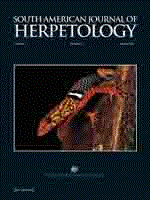Nine species of the Neotropical boid genus Corallus are distributed from southeastern Guatemala to southeastern Brazil. Based largely on previously published papers, we accumulated 271 prey records for all species combined, and they comprised 2 frogs, 69 lizards (mostly Anolis), 1 snake, 65 birds, and 134 mammals (marsupials, rodents, bats). There is a conspicuous difference in diet between the two West Indian species (C. cookii and C. grenadensis) and species occurring on the mainland: juvenile and subadult boas from the West Indies prey almost entirely on anoles, whereas on the mainland (with the notable exceptions of C. batesii and C. caninus), those age classes prey largely on birds and bats. Four species (C. cookii, C. grenadensis, C. hortulanus, and C. ruschenbergerii) are vertebrate generalists and exhibit both active and ambush foraging modes. Adult C. batesii and C. caninus (and, perhaps, C. cropanii) are specialists on mammalian prey, may only utilize an ambush foraging mode, and were the only species for which we had at least three prey records that did not include avian prey. Although more common than the critically endangered C. cropanii, both C. annulatus and C. blombergii seem genuinely rare and it is premature to make any generalizations regarding their trophic biology.
How to translate text using browser tools
1 August 2012
On the Diets of Neotropical Treeboas (Squamata: Boidae: Corallus)
Robert W. Henderson,
Michael J. Pauers
ACCESS THE FULL ARTICLE
Boidae
Corallus
diet
foraging
Prey Densities
West Indies





